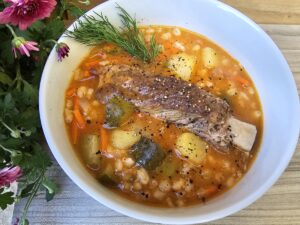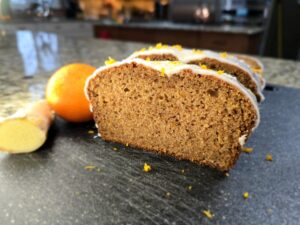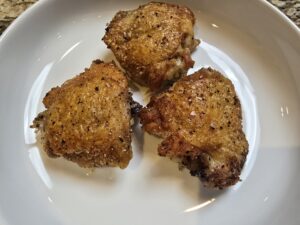Cooking salmon with skin-on is key for moist, juicy, tender and not overcooked salmon. You don't have to eat the skin, if you don't want to; it will be exceptionally easy to peel it once the salmon is cooked. However, the skin protects the fillet during the cooking process to yield exceptional results.
Feel free to use wild salmon, farm-raised salmon or even skin-on trout, depending on your personal preference and what is available in your local supermarket.
Scale this recipe up as many times as desired!
Heat oil over medium high heat in a cast iron pan. I personally wouldn't use non-stick pan here. Heat the oil until shimmering. This should take at the very least 3 minutes.
While the pan is heating, dry your salmon with the paper towels, especially focusing on the skin. This step is very important as if the skin is wet, you will end up steaming your salmon instead of searing it and crisping up the skin. When dry, generously season your fillets with salt.
Place skin side down in a hot pan and press down with kitchen utensils or even your hands. You want the skin to adhere really well to the pan. Cook the salmon without moving it. If it starts smoking, turn down the heat, but do not move, lift or flip your fillets. We will be cooking the fillet until it's 90% cooked. You will observe the flesh of the skin starting to become opaque and cook. When you feel it's getting close, measure the internal temperature of your fish. There's a lot of debate as to what temperature to cook the salmon to. As always, I stick to the government suggested minimum temperature, which is 145°. This really won't take long, around 3-8 minutes depending on the thickness of your fish.
As you get close to 138, 140° - flip the salmon and cook on the other side for a minute or so, maybe even less. Check the internal temperature - make sure it has registered 145 and remove your salmon to a plate, with the skin side up. You may wish to line the plate with a paper towel do drain all the fat.
Note, at 145 the salmon is still quite pink on the inside. If you are used to overcooked salmon - it may be quite a shock for you. It will be juicy, delicious but may appear underdone to those not used to it. If desired, cook to a higher temperature that will make you happy.
Serve right away with your favourite sides. As discussed in the note, feel free to remove the skin if you wish. However, the skin will be crisp and absolutely delicious!! What an accomplishment this dish is!
Ingredients
Directions
Cooking salmon with skin-on is key for moist, juicy, tender and not overcooked salmon. You don't have to eat the skin, if you don't want to; it will be exceptionally easy to peel it once the salmon is cooked. However, the skin protects the fillet during the cooking process to yield exceptional results.
Feel free to use wild salmon, farm-raised salmon or even skin-on trout, depending on your personal preference and what is available in your local supermarket.
Scale this recipe up as many times as desired!
Heat oil over medium high heat in a cast iron pan. I personally wouldn't use non-stick pan here. Heat the oil until shimmering. This should take at the very least 3 minutes.
While the pan is heating, dry your salmon with the paper towels, especially focusing on the skin. This step is very important as if the skin is wet, you will end up steaming your salmon instead of searing it and crisping up the skin. When dry, generously season your fillets with salt.
Place skin side down in a hot pan and press down with kitchen utensils or even your hands. You want the skin to adhere really well to the pan. Cook the salmon without moving it. If it starts smoking, turn down the heat, but do not move, lift or flip your fillets. We will be cooking the fillet until it's 90% cooked. You will observe the flesh of the skin starting to become opaque and cook. When you feel it's getting close, measure the internal temperature of your fish. There's a lot of debate as to what temperature to cook the salmon to. As always, I stick to the government suggested minimum temperature, which is 145°. This really won't take long, around 3-8 minutes depending on the thickness of your fish.
As you get close to 138, 140° - flip the salmon and cook on the other side for a minute or so, maybe even less. Check the internal temperature - make sure it has registered 145 and remove your salmon to a plate, with the skin side up. You may wish to line the plate with a paper towel do drain all the fat.
Note, at 145 the salmon is still quite pink on the inside. If you are used to overcooked salmon - it may be quite a shock for you. It will be juicy, delicious but may appear underdone to those not used to it. If desired, cook to a higher temperature that will make you happy.
Serve right away with your favourite sides. As discussed in the note, feel free to remove the skin if you wish. However, the skin will be crisp and absolutely delicious!! What an accomplishment this dish is!









